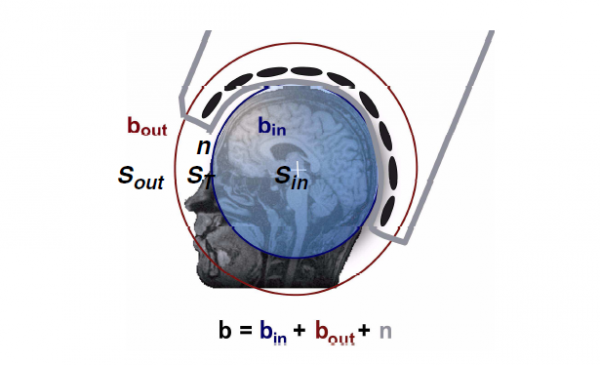Pre-Processing
Maxfilter
Signal Space Separation (SSS) is a method that utilizes the fundamental properties of electromagnetic fields and harmonic function expansions in separating the measured MEG data into three components:
b'in': The brain signals originating inside of the sensor array (space S'in').
b'out': External disturbances arising outside of the sensor array (space S'out').
n: Noise and artifacts generated by the sensors and sources of interference located very close to the sensors (space S'T').
SSS
The basic Maxwell filtering operation can be regarded as spatial filtering, because separation of b'in' and b'out' is done on the basis of the spatial patterns and is independent of time. Spatial separation can suppress only external interference emanating from space S'out', such as electromagnetic pollution due to power lines, radio communication, traffic, elevators etc. External interference can also arise in the patient. For instance, normal cardiac and muscular activation cause fields detectable by MEG sensors, and any pieces of magnetized material in/on the body may cause very large disturbances.
tSSS
Identification and suppression of the S'T'-space components require additional knowledge of the temporal dynamics. The temporal extension of the SSS method (tSSS) significantly widens the software shielding capability of MaxFilter, because tSSS can suppress also internal interference that arises in the S'T'-space or very close to it. Such disturbances can be caused, for example, by magnetized pieces in/on the subject's head (such as dental work, braces, or magnetized left-overs in burr-holes), or by pacemakers or stimulators attached to the patient.
Reference: MaxFilter Manual
SSP
EOG Type : 202 ac1.info.chs.kind - Eye Blink
ECG Type : 402 ac1.info.chs.kind - Heart Beat
